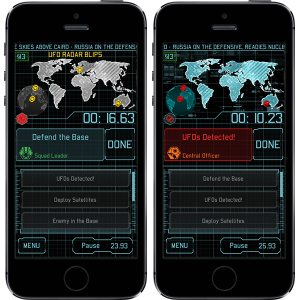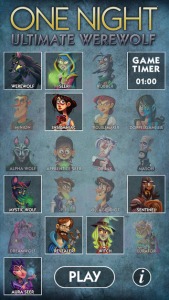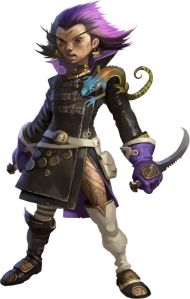Last Saturday, we had a full day of games at our local games shop. As always, it was a good time, with a mixture of people, and the chance to try out some new games.
Amongst the games we played this week were several that were new to me, and I want to think today about two in particular: XCOM and One Night Ultimate Werewolf.
Slightly unusually (at least for me) these games both heavily featured Apps – i.e. something downloaded onto a smartphone (or presumably a tablet would work as well) that drives elements of the game.
 In XCOM, players are trying to fight off an alien invasion and the app drives a real-time phase of the game, where players are informed of the arrival of alien ships on the board, forced to allocate resources to various challenges, and generally make decisions quick-sharpish.
In XCOM, players are trying to fight off an alien invasion and the app drives a real-time phase of the game, where players are informed of the arrival of alien ships on the board, forced to allocate resources to various challenges, and generally make decisions quick-sharpish.
One Night Ultimate Werewolf is a party-game, which share many similarities with well-known yet hideously ill-defined games like Mafia: essentially, the players are a group of villagers, some of whom are in fact Werewolves, intent on killing the others. By means of discussion, bluff and argument, players must decide who they believe to be the werewolf (/mafia member/traitor etc) and carry out a summary lynching. The villagers win if they successfully execute the wolves, and the werewolves win if they survive (there’s more to it than that, but that covers the key shape of the game for the purpose of this article).
These games generally involve a lot of time spent with all or most of the players having their eyes closed, and either a narrator having to sit out or, in the case of Ultimate Werewolf, a series of role-cards which have to be moved around. The App for Ultimate Werewolf solves this problem by having a recorded message instructing the various players on when to open and close their eyes and what actions they need to do.
 There are certainly advantages to these apps – I remember playing a game of The Resistance: Avalon, another game of this type, shortly after we acquired it and struggling through the eyes-closed bit of the set-up, as I wanted to have my eyes shut to be part of the game, at the same time as needing to read instructions on what was meant to be happening. Having the app meant that nobody needed to remember things, simply to listen to, and to follow the instructions. It seemed fairly easy to configure which characters were in use for any particular game – and having the app cover the rules means that you can more quickly throw in bonus characters rather than feeling you need to stick with the most basic version of the game forever, until people can get the hang of things, as well as to customise the amount of time between actions. As an added bonus, the app even provided some background noise to make it harder to tell simply by listening who was moving at which point in the turn.
There are certainly advantages to these apps – I remember playing a game of The Resistance: Avalon, another game of this type, shortly after we acquired it and struggling through the eyes-closed bit of the set-up, as I wanted to have my eyes shut to be part of the game, at the same time as needing to read instructions on what was meant to be happening. Having the app meant that nobody needed to remember things, simply to listen to, and to follow the instructions. It seemed fairly easy to configure which characters were in use for any particular game – and having the app cover the rules means that you can more quickly throw in bonus characters rather than feeling you need to stick with the most basic version of the game forever, until people can get the hang of things, as well as to customise the amount of time between actions. As an added bonus, the app even provided some background noise to make it harder to tell simply by listening who was moving at which point in the turn.
Whilst for Ultimate Werewolf, the app was a player-aid downloaded as an optional extra, for XCOM, it is an essential part of the game. The are certain steps (receive income, deploy troops, more UFOs appear, assign scientists to research, resolve crisis cards) which happen every round, but the order, frequency and detail is randomised – in one round we had 2 crisis cards that had little effect, whilst on another turn we got hit with 7, most of them hideous. As noted above, the invasion of earth is also happening in real-time and, with the best will in the world, no amount of player enforcement with sand-timers is going to impose that in the same way that an app – which requires the players to confirm that they have done it (and immediately flinging the next challenge at them) will.
The fact that the app also walks players through the non-timed stage of the game is (on balance) probably helpful, although the constant tension-creating background music got on my nerves – for some people this may add to the atmosphere but overall, I’d say it was at best neutral, at worst positively irritating.
For me though, the whole concept of an app-driven game was one I was slightly uncomfortable with: I’ve seen more and more adverts around for games which incorporate apps placed on the table or otherwise forming an integral part of the game, although I’d never played any, and I can’t say I’ve been falling over myself with enthusiasm to do so. For one thing, I’m old enough that whilst I own a smart-phone, I can count on my fingers the apps I actually use – the fact the multiple people had speakers with them ready to hook up to their phones and broadcast the necessary instructions was quite a surprise to me.
One of the things I like about board game is the physical simplicity – even those with loads of tokens, for the most part don’t rely on physical complexity. Something which is dependent upon technology just feels like it’s slipping into the realms of computer games.
In the interests of full disclosure, I think I should pause for a moment to outline the extent of my own hypocrisy here- I use / have used apps as randomisers for games before (for games like Dominion or Marvel Legendary, to determine which sets/mission to use), and I keep extensive spreadsheets of game-related information (scores, play-sessions etc). The difference for me is that it’s not actually within the game. Whenever I’ve played games online –whether it be Ticket to Ride via the Days of Wonder website, or experimented briefly and painfully with things like OCTGN or Vassal, it’s never felt the same – the Lord of the Rings LCG is one of my favourite games, but when you sterilise it into an electronic platform, it loses the appeal. I’ve played plenty of minesweeper and free-cell over the years, as well as spells of more fully-fledged computer games like Civilisation or The Sims, but if it’s a board game, I’ll happily leave it as a board game.
I can’t imagine myself buying either of the app-driven games I played this weekend any time soon – neither really fills any gap that I can see amongst the people I regularly game with. However, that doesn’t mean I’d avoid playing them again – at least once or twice.

Perhaps I’m just stuck in my ways, perhaps I’ve just seen too much Battlestar Galactica (or the Terminator/Matrix franchises etc), but for my own purposes at least, I’m going stick with dead tree for my board games, occasionally supplemented by plastic and metal. I’d be interested to know how other people feel about the presence of apps in their board games.

